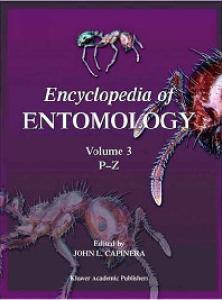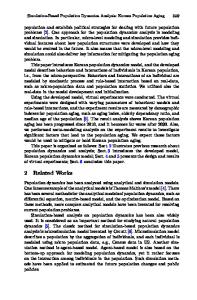Apex Predators Decouple Population Dynamics Between Mesopredators and Their Prey
- PDF / 767,052 Bytes
- 12 Pages / 593.972 x 792 pts Page_size
- 83 Downloads / 396 Views
Apex Predators Decouple Population Dynamics Between Mesopredators and Their Prey Benjamin Feit,1,2*
Anna Feit,2 and Mike Letnic2
1
Department of Ecology, Swedish University of Agricultural Sciences, PO Box 7044, 750 07 Uppsala, Sweden; 2Centre for Ecosystem Science, School of BEES, University of New South Wales, Sydney, New South Wales 2052, Australia
ABSTRACT The mesopredator release hypothesis (MRH) predicts that the removal of apex predators should lead to increased abundance of smaller predators through relaxation of suppressive, top-down effects. However, apex predators’ effects on mesopredators are also likely to be modulated by interactions with human activities and ecosystem productivity. The exploitation ecosystems hypothesis (EEH) predicts that biomass of apex predators will scale with primary productivity but herbivore and mesopredator biomass will remain constant due to top-down control. Here, we take advantage of the manipulation of dingo abundance across Australia’s Dingo Fence to explore the primacy of top-down and bottom-up effects as drivers of feral cat abundance. Using field data collected across the Dingo Fence, we test the predictions generated by MRH and EEH that cat populations should be bottom-up controlled by prey abundance (a proxy for primary productivity) where top-down control exerted by dingoes was weak but not where it was
strong. We examined dingo and cat scats to provide mechanistic support for the idea that dingoes control cats through killing and exploitative competition. Overall, cats were more abundant where dingoes were rare. Cat abundance was correlated positively with prey abundance where dingoes were rare but was not correlated with prey abundance where dingoes were common. Cat remains were present in 1% of dingo scats, and dietary overlap between cats and dingoes was high (0.75– 0.82). Our study provides evidence that top-down control exerted by apex predators can decouple population dynamics between mesopredators and their prey and thus have primacy over bottom-up effects. Key words: Strzelecki Desert; Australia; mesopredator release hypothesis; exploitation ecosystems hypothesis; top-down; bottom-up; dingo; feral cat.
INTRODUCTION
Received 11 April 2018; accepted 10 February 2019 Author contributions BF designed the research, collected and analyzed data and wrote the manuscript. AF collected data and wrote the manuscript. ML designed the research, collected data and wrote the manuscript. *Corresponding author; e-mail: [email protected]
Apex predators can play a pivotal role in maintaining healthy, balanced ecosystems (Estes and others 2011). Apex predators’ suppressive, topdown, effects on the populations and phenotypes of prey and smaller predators can have cascading effects on species at lower levels in food webs and result in changes to processes that affect the flow of energy and materials through ecosystems (Ripple
B. Feit and others and others 2014; Morris and Letnic 2017; Rees and others 2017). Disruption to ecosystems caused by the removal of apex pred
Data Loading...











